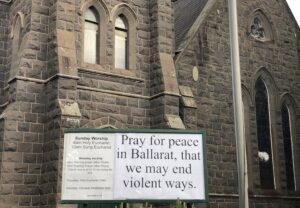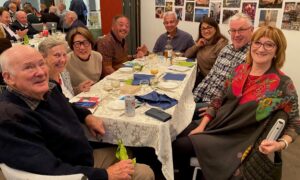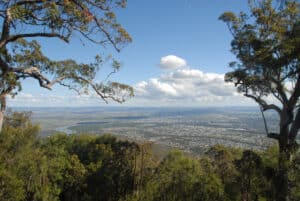
Jenan Taylor
14 September 2022
Shortly after catastrophic bushfires swept through the Croajingolong Cooperating Parish in January 2020, a monumental locally-driven effort to help the community recover, got underway.
The parish’s Reverend Jude Benton found herself tasked with easing the psychological scars of locals and being a voice for them.
As the months passed and the remote region also became buffeted by floods, and the further isolating effects of pandemic restrictions, Ms Benton observed a troubling shift.
Many people had developed a vastly different stance toward their natural surroundings compared to before the fires.
“The emotion around the bush was all about fear rather than the balance of environment itself,” Ms Benton said. “As Cann River had endured worse than Mallacoota because it had been entirely surrounded by fire, we decided to try find a way to address that there.”
Extensive climate modelling shows that climate change related extreme weather events including storms and bushfires will strengthen in severity and frequency in Australia, and that the time between climate emergencies will shorten.
Read more: Young Christians worried about climate, but ministers wary of topic
Trained in environmental resource management, Cann River church member Kate Cowden said she was well acquainted with those projections.
Ms Cowden, who used to work in community development with Scripture Union, saw a chance to build her community’s resilience to future events through fortifying their environment.
She had been involved with the native grasses project of her neighbour, the author and farmer Bruce Pascoe, and had learned some Indigenous environmental history from him.
Following the fires Mr Pascoe had a bumper crop of grains, Ms Cowden said.
She’d also observed tall acacias and tree ferns springing up seemingly out of nothing, while long dormant orchids and black and yellow flowering plants brought a dramatic beauty to the sepia-tones of the post fire landscape.
Yet she was aware of many people who were suspicious of Indigenous vegetation and that often they would burn it.
Ms Cowden was certain the church could do something to help change that mind set.
“A church’s business is people, nurturing their relationship with our creator, and modelling His love and care for all of His creation,” she said.
“With this in mind, as a parish, we chose to extend some peace and love at Cann River by developing a community garden.”
Community garden projects from urban food farms to Indigenous and meditation gardens, have boomed in Australia in the last 30 years.
Widespread research has shown that the ones that employ responsible gardening approaches add green space to urban areas and help to reduce excessive heat, among other environmental benefits.
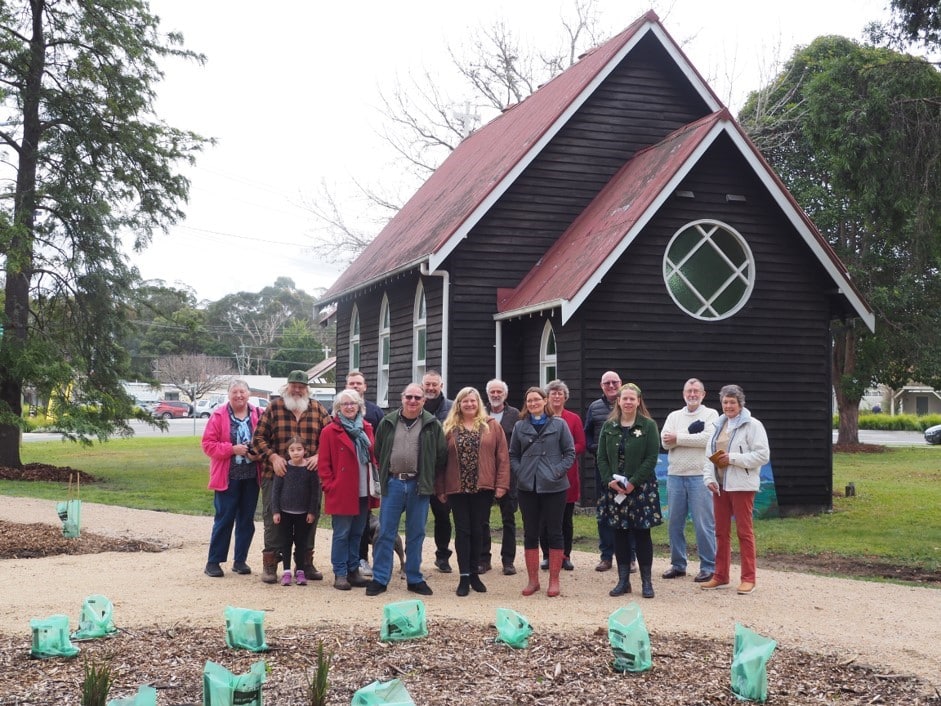
Networking organisation Community Gardens Australia recently found that on average 15,000 volunteer hours were spent in community gardens a week.
It attributed participant motivation to the increased sense of wellbeing, health and friendship that the schemes engendered.
With the help of the Year nine students at Cann River school, Ms Cowden and fellow congregants created a reflective space surrounded by native plants around the town’s combined Uniting and Anglican church.
Situated opposite the community centre and next to a café, the garden extended public picnic areas and led to a nature walk.
The idea was to establish plants that weren’t so flammable, and to provide a place of beauty and comfort within the community where people could meet and spend time, she said.
For Cann River, where there was only one road in and one road out, and people often resided far from each other, amiable connections were critical to good mental, spiritual and emotional health.
Ms Cowden also selected plants that were appropriate for the food and habitat recovery of the area’s fauna, and created a green avenue for them.
Many of the shrubs are still in plastic tubes, but recently wildlife droppings had begun to appear along the green trail, she said.
The small signs of revival encouraged Ms Cowden to feel hopeful that through the project, the locals would again come to love and want to protect the natural wilderness, and feel strengthened as community.
Read more: It’s the transformation our planet needs, it’s the transformation we need
Wiradjuri man and St Oswald’s Glen Iris vicar the Reverend Glenn Loughrey has always believed that it was important that people learned to appreciate the land.
When he concludes a baby’s baptism ceremony, Mr Loughrey often strokes a bit of earth on to the palms of the infant’s hands to get them used to the feel of it.
He does a similar thing when older children visit the church.
“I remind them that the ground is their mother and everything in it is all that we need to live. All the wisdom is there in that bit of earth. And I put some in their hands, and then I tell them to go and place it somewhere in the Reconciliation Garden. That becomes their space,” he said.
In St Oswald’s Reconciliation Garden pathways curve around beds of kangaroo paws, bird attracting trees and other hardy and Indigenous vegetation. Near the entrance, sylvan benches surround a yarning circle with a timber pulpit and fire pit.
The garden was established in 2017 on the site of a disused tennis court that had become overrun with noxious weeds and inappropriate plants.
The clay and gravel surface would retain too much water in winter and had been a heat island in summer, Mr Loughrey remembered.
A landscaper and university students helped the church overhaul it. But in all it was a simple and reasonably cheap step to take to make the place more ecologically friendly and a space where people could gather to hold conversations, he said.
Congregation members have spent a lot of time in the garden, but he had also noticed among the regular visitors several people who weren’t part of the church.
They included Buddhist monks, elderly people who brought their grandchildren for a play in the in the space, and a person who never visited inside St Oswald’s, but who helped landscape and maintain the garden and other areas around the church.
Mr Loughrey said often people engaged with the garden, just by pulling out weeds, or brushing their hands across shrubs and inhaling the fragrance that’s rubbed onto their skin.
He viewed those interactions as gentle acts of responsibility that quietly moved people closer to understanding Indigenous Australians.
But Mr Loughrey said that he also wanted Aboriginal community members to want to understand non-Indigenous people.
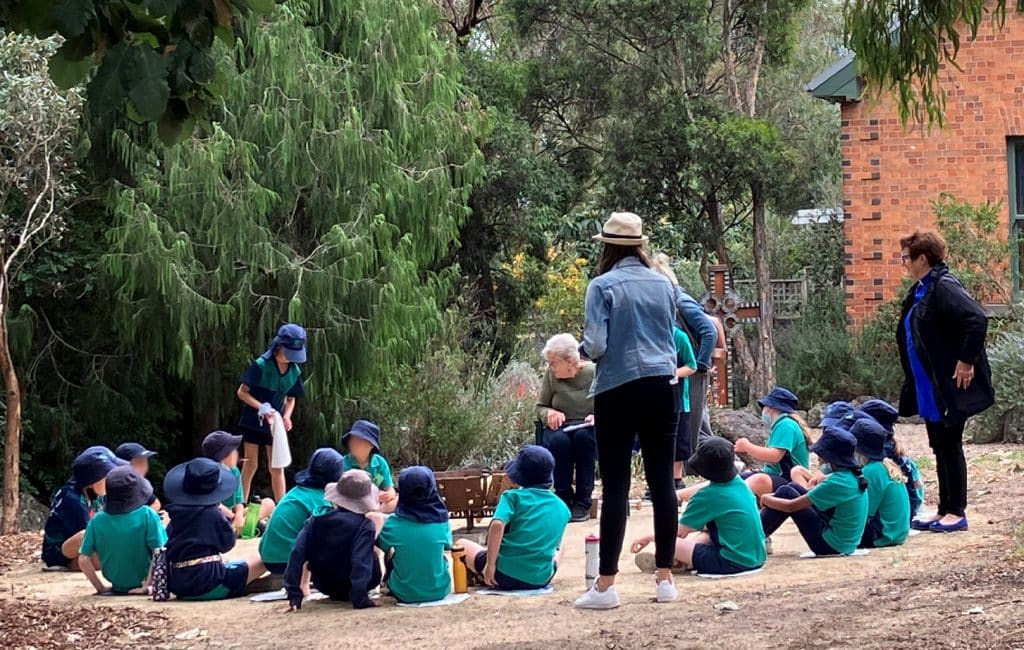
He believes that Indigenous gardens like his, as well as the one at St Margaret’s Eltham, would be conducive to conversation and engagement in support of that goal.
“Many Indigenous people may never want to go inside the church because there’s too much history, but they may feel more comfortable talking in the garden around the fire,” he said.
He has no doubt that cultivating germane, responsible community gardens were a way for people to take intentional steps toward caring for their surroundings and engaging with what mattered to Aboriginal people.
But it wasn’t enough to simply plant kangaroo paws and position a fire pit and think that everything would heal, Mr Loughrey said. That would take years of difficult conversations and whole of community will.
While the Community Gardens Australia directory lists more than 580 initiatives, only 38 are run by faith institutions. Very few are Anglican.
But Tearfund said in April that almost half of all young Christians thought that churches weren’t doing enough to address climate change.
In a survey they found that many wanted their leaders to be willing to try anything. Setting up community gardens was a popular suggestion.
Mr Loughrey said he believed that most clergy would love to address climate change in more practical ways. But there were realities to how much churches could do.
“Most parishioners in metropolitan areas may never experience the disasters that people near the bush have faced so it’s unlikely they’d see the urgency of acting on it,” he said.
Where congregations are ageing, they may also be more physically challenged to get involved in efforts like a community garden.
In many cases, they will depend on one person, usually the vicar, to lead the entire project, something that most vicars, have neither the capacity, knowledge or time to manage.
Nonetheless it was important that parishes tried to take action to care for environment and in doing so, make right their relationships with Indigenous Australians, Mr Loughrey said.
Church leaders had a better chance of achieving that if they looked beyond their walls and formed community ties with believers, as well as the unchurched.
He said churches that worked with their councils, local schools and neighbourhood organisations, were more likely to find people who would be willing to be involved in things like setting up and caring for community gardens.
“Getting people to help might work if people started to see the church and its spaces as not belonging to the Anglican Church or to Anglicans, but to the whole community,” he said.
For more faith news, follow The Melbourne Anglican on Facebook, Twitter, or subscribe to our weekly emails.

